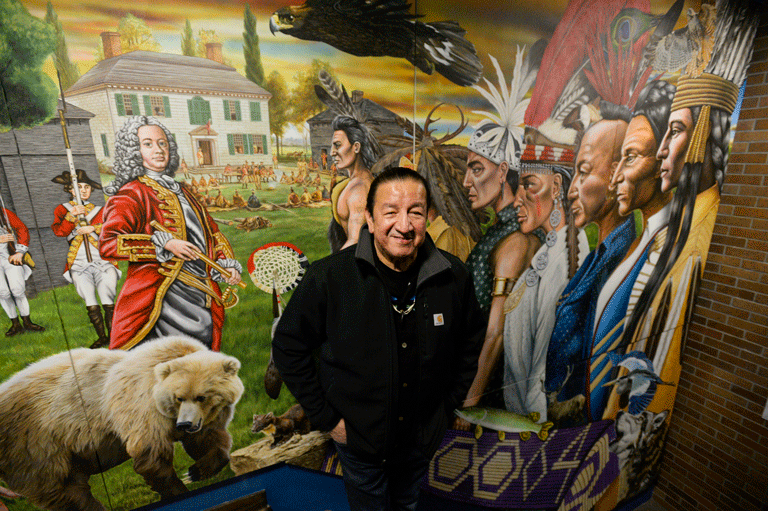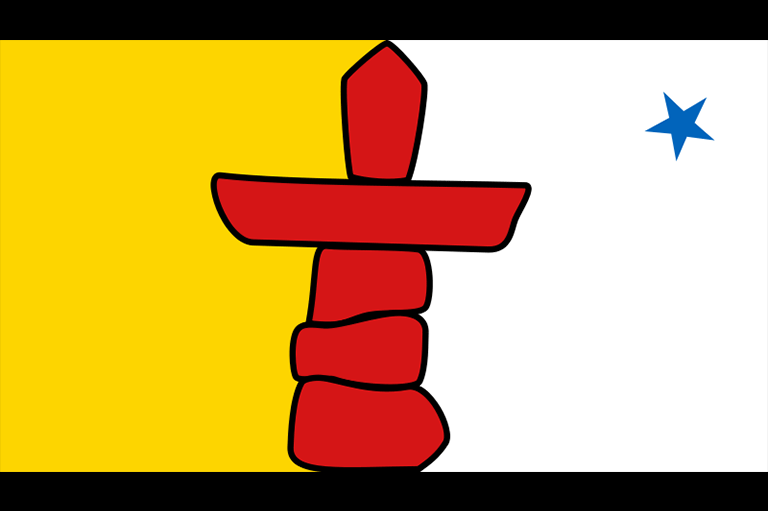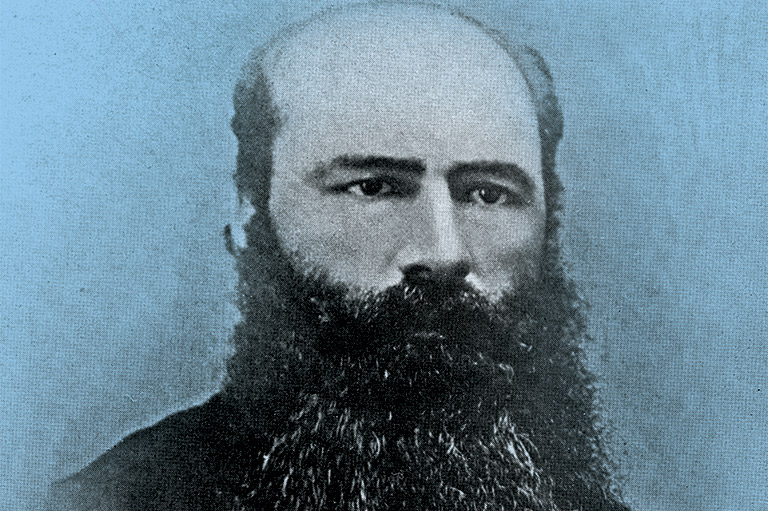At Cross Purposes
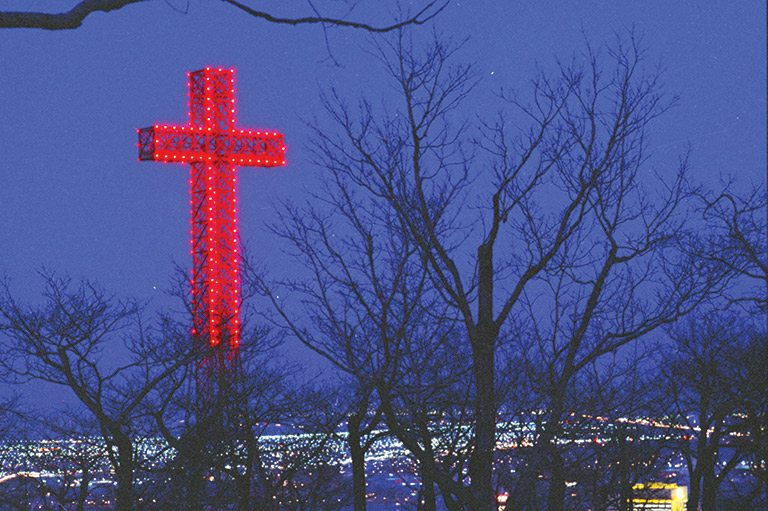
Quebec’s controversial Bill 21, or Loi sur laïcité de l’état (act respecting the laicity of the State), has stirred a debate where usual ideological lines don’t tell the whole story. Introduced by the government of Premier François Legault and adopted on June 16, 2019, by the Quebec National Assembly, it defines and formally enshrines the principle of state secularism in the province. It prohibits the wearing of religious symbols by public servants “in positions of authority,” including police officers, judges, and teachers and principals in public elementary and secondary schools.
Bill 21 is popular in Quebec but not elsewhere in the country: A September 2021 survey by the polling firm Leger indicated that sixty-four per cent of Quebecers supported it, compared to only twenty-eight per cent of Canadians outside the province. The law is being challenged in court by the National Council of Canadian Muslims and the Canadian Civil Liberties Association; it is also opposed by the Centre for Israel and Jewish Affairs and the World Sikh Organization of Canada.
“The ultimate purpose of [state secularism] is to ensure that the state does not favour any one religion over another. Bill 21 does the opposite,” the World Sikh Organization of Canada stated in a submission to the Committee on Institutions of Quebec’s National Assembly prior to the passage of Bill 21. “By its operation and design, Bill 21 favours any religion where there are no outward manifestations of the faith. For a practising Sikh, Muslim, and Jew, Bill 21 represents an uncompromising affront to their personal and spiritual integrity.”
With 7 uniquely curated newsletters to choose from, we have something for everyone.
But while the bill is often seen as expressing the values of old-stock Quebecers, the anti-extremist Council for Muslims Facing Tomorrow and l’Association québécoise des Nord-Africains pour la laïcité both support it. It has also found advocates among certain immigrants who came to Canada after living under repressive theocratic regimes.
Djemila Benhabib, whose family had to leave Algeria because of death threats from Islamic extremists, wrote an opinion piece in support of the bill that was published in the Gatineau, Quebec, newspaper Le Droit on December 11, 2021. “In Quebec, schools have been democratized to mix students and not to separate them based on social origin and the beliefs of their parents,” she wrote. “In other words, why have we campaigned so hard to remove crucifixes from classroom walls if it is to be invaded by other religious symbols?”
This is the latest manifestation of a long struggle concerning the place of religion in the public sphere in Quebec, a story largely unknown or misunderstood outside the French-speaking community. And, of course, it all started with New France.
When Catholic Samuel de Champlain and Protestant Pierre Du Gua de Monts founded Quebec City in 1608, France was painfully coming out of seventy years of internal religious wars. But Catholicism, as the king’s religion, was gaining the upper hand. The Catholic Church was on the offensive in Europe and far beyond, trying to win new converts all over the world, from Asia to the Americas, and to reconquer the positions it had lost in the sixteenth century when the Protestant Reformation swept central and northern Europe, England, and Scotland.
The Jesuits, the most important of the Catholic missionary orders, arrived in Canada in 1625. If the fur trade led to the foundation of the cities of Quebec and Trois-Rivières, the creation in 1642 of Ville-Marie — later renamed Montreal — was a religious enterprise. French nobleman Paul de Chomedey, sieur de Maisonneuve, and missionary nurse Jeanne Mance co-founded Ville-Marie at the behest of the Catholic Société Notre-Dame de Montréal, a subsidiary of the Compagnie du Saint-Sacrement, a secret society aimed at transforming France and its colonies into a fully Catholic empire. A French royal edict of 1660 put an end to the Compagnie’s activity, but much of its agenda was taken over and advanced by the monarchy itself, including the complete banning of Protestantism in all French territories and possessions in 1685.
In 1627 the seigneurial regime, a feudal type of land tenure, was adopted in the colony, and the religious communities became the most important landlords. The Sulpician order, for instance, was granted the entire island of Montreal. That same year, three communities of nuns founded hospitals and schools: the Ursulines, the Hospitalières de la Miséricorde, and the Hospitalières de Saint-Joseph. The Jesuits created the Collège des Jésuites in Quebec City in 1635.
The first bishop of Quebec, Monseigneur François de Laval, soon set out to control public morality by attempting, among other things, to forbid the sale of alcohol — although he did not succeed in this design because the governor opposed him, considering alcohol a necessary commodity in the fur trade with First Nations. Blasphemy was punishable by law.
The British conquest in 1763 brought a shock to the system. After France’s defeat in the Seven Years War, the British Empire took possession of the Catholic colony of New France, which it renamed the Province of Quebec. (In 1791, the British government would divide this province into the colonies of Upper Canada, with an English-speaking majority, in the west, and Lower Canada, with a French-speaking majority, in the east.)
Catholic Church authorities thenceforth had to deal with a Protestant government in London and with the immigration of some Jews and Protestants, including French Huguenots, into their midst. Though Catholicism was still illegal in Great Britain, religious freedom was granted to Catholics in North America through the Quebec Act in 1774.
Advertisement
The main problem for the Catholic Church was that, under British rule, Catholic priests were forbidden from coming to the colony from France. The Quebec clergy found its numbers sinking, and religious attendance followed the decline of the priesthood.
A brief respite came during the French Revolution of 1789–99, when a number of French priests were allowed to take refuge in Lower Canada. They brought with them a conservative, counter-revolutionary, and anti-liberal bias that durably imprinted the Quebec Catholic Church.
Around this time, Catholic authorities became worried about the disastrous state of the French-Canadian educational system. In 1789, only about 4,000 of Quebec’s 140,000 Catholic inhabitants could read and write. The English-speaking minority had one school for 588 people, while French Canadians had one for 4,000. There were only two colleges left in the colony. The impossibility of bringing new teachers and books from France, due to the strained diplomatic relations between France and Britain, was largely to blame for the situation.
But, while the Catholic Church wanted to rebuild a system of education, it wouldn’t go so far as to accept just any system: In 1789–90 the bishop of Quebec, Monseigneur Jean-François Hubert, fought energetically (and, eventually, with success) against a project initiated by Judge William Smith to establish a university in the colony. The bishop opposed the project because the university would have been non-denominational. Other proposals to create a school system were also abandoned. Until well into the twentieth century, the Catholic Church consistently opposed any school system it could not control, at least for the Catholic population.
In the 1820s, when diplomatic relations between France and Great Britain normalized due to the end of the Napoleonic Wars and the restoration of the French monarchy, French priests, nuns, and friars were once again permitted to come to Canada. But the 1830s also saw the rise of liberal and republican ideas with the Patriote and reformist movements, culminating in the Rebellions of 1837–38. In those events, the clergy largely sided with the British colonial government, preferring a Protestant authority to the rule of irreligious revolutionaries.
The late 1830s saw not only the crushing of the rebellions and the loss of prestige of the Patriotes and their ideas, but also the arrival of the Frères des écoles chrétiennes, a religious teaching order that was part of the movement to re-Christianize France after the French Revolution. These religious brothers built a seminary and many schools in Lower Canada. Similar religious orders soon followed, and their members built a solid network of schools and colleges, fighting successfully for education in the colony to remain under their control.
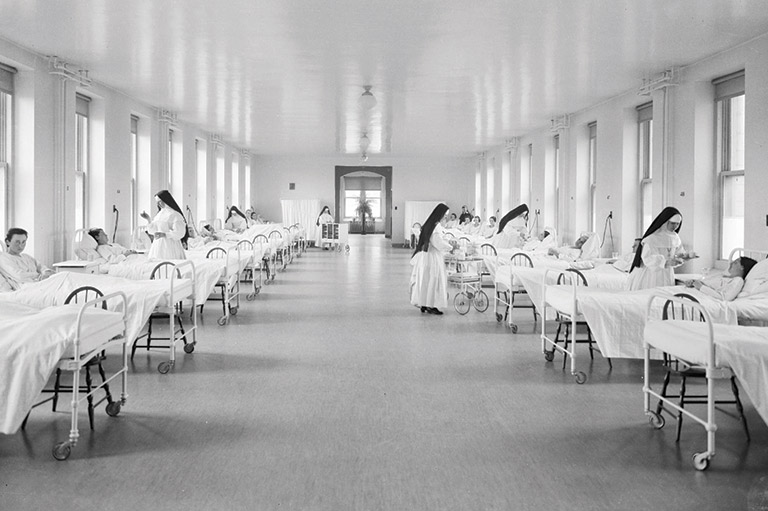
The struggle between the liberal ideas defended by the Patriotes and their successors, les Rouges, and the conservative concepts supported by the Catholic Church occupied most of the 1830s, 1840s, and 1850s. By the mid-to-late nineteenth century the victory of conservative Catholicism had become evident. While Patriotes like Louis-Joseph Papineau had some successes — for instance, in adopting a law in 1832 guaranteeing Jews the same rights as other citizens of the province — the clergy, by then recruited locally, used its influence in the legislative council to attend to matters that were of more practical importance.
A law allowing priests to be elected as school trustees was passed in 1830, and another giving parish priests the right to inspect schools and to certify teachers was adopted in 1832. While the liberals were fighting at the legislature, the clergy was creating a network that ensnared the entire French-Canadian population. The parishes supplanted the seigneuries as the main local institutions, especially after the reform of the seigneurial system in 1854.
In 1867, the Catholic Church put its weight behind the project of Confederation and ensured the victory of the conservatives in provincial elections for most of the rest of the nineteenth century. The British North America Act of 1867 — under which the former Lower Canada became the current province of Quebec — entrenched the religious character of education in the province by dividing the school system between Protestant and Catholic boards.
In 1875, after consulting the bishops, Conservative Premier Charles-Eugène Boucher de Boucherville abolished the Ministry of Education. In its place, he created the Council of Public Instruction, which was divided into two committees — one Protestant and one Catholic. The bishops were automatically granted half the seats on the Catholic committee. Catholicism was seen as a national trait of French Canadians, both by themselves and by their English-speaking neighbours.
In 1871, the last bastion of radical liberalism, the Institut Canadien de Montréal, was forced to close its doors, its members under threat of excommunication. Besides controlling education for the French-speaking majority, the Catholic Church also governed social services: Hospitals and charities had religious affiliations, and the Catholic ones were usually owned by religious orders. An attempt by a Liberal government to reinstate the Ministry of Education in 1897 was quickly killed by the legislative council, the un-elected upper chamber that was packed with Conservative appointees. Schooling was not made mandatory until 1941.
When Alphonse Desjardins began founding his co-operative credit unions in 1901, he made sure to have the approval of the Catholic Church. The first credit unions were often located in church basements. In 1907, Catholic trade unions were created. It took Quebec women until 1940 — two decades later than in most other provinces — to win the right to vote in provincial elections, largely because the Church opposed it. Highly conservative in its outlook toward women, the Church opposed birth control and encouraged large families.
In 1941, one in eighty-seven Quebec Catholics was a member of a religious order. In 1945, the province had five thousand priests and thirty-five thousand nuns, friars, and monks. Every organization had its chaplain. Books in public libraries had to be approved by the bishop. Prominent intellectuals included clerics such as scientist Conrad Kirouac (better known by his religious name, Brother Marie-Victorin), Father George-Henri Lévesque, founder of the Faculty of Social Sciences at Université Laval, and Abbé Lionel Groulx, the best-known promoter of a new brand of conservative Catholic nationalism centred on the province of Quebec, whose stances on fascism and anti-Semitism still embarrass many of his admirers today.
The government sometimes anticipated the Church: More than six thousand movies were censored between 1913 and 1967 by a very Catholic provincial censorship bureau. Young people were enlisted into a network of organizations such as the Jeunesse ouvrière catholique — breeding grounds for future priests and nuns and for Catholic social activists.
Save as much as 40% off the cover price! 4 issues per year as low as $29.95. Available in print and digital. Tariff-exempt!
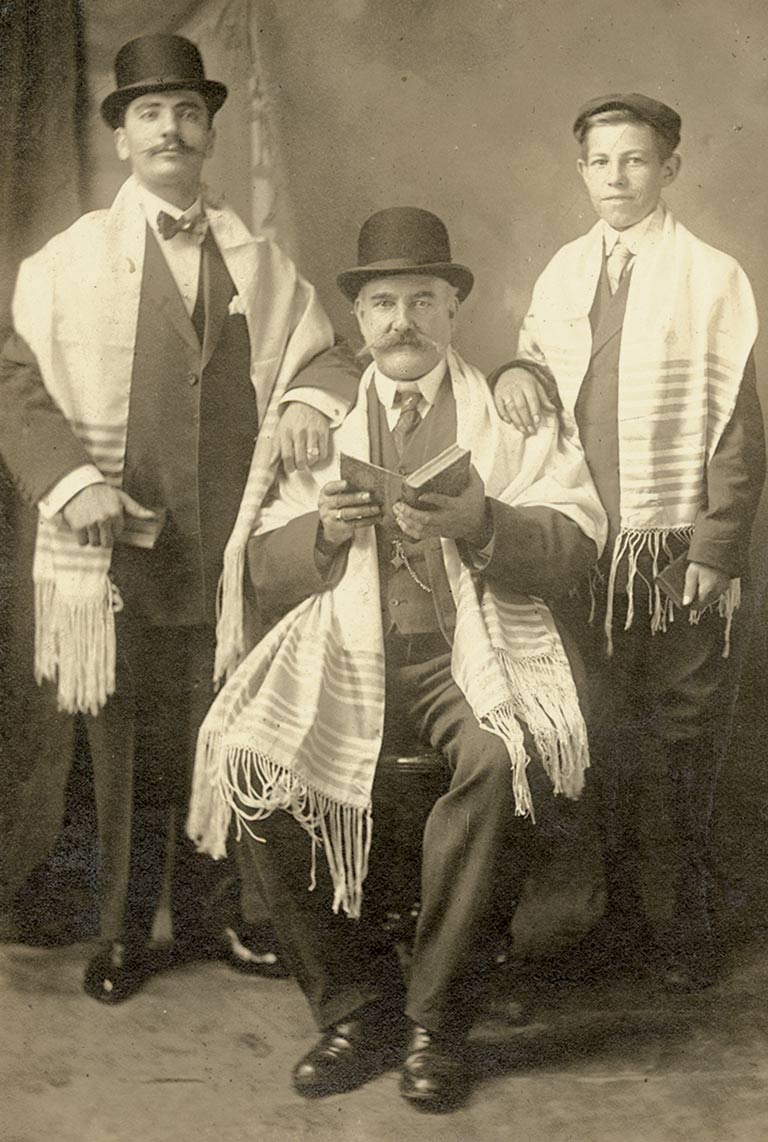
Yet in the 1940s the recruitment of clergy was slowing down. The number of ordained clergy grew by thirty per cent every ten years between 1911 and 1941; that number fell to nineteen per cent between 1941 and 1951, then to fourteen per cent between 1951 and 1961. From the most prestigious career for young men, the priesthood became one among many in a diversifying society. What’s more, a debate raged inside the Catholic Church itself: Lay people were increasingly demanding a bigger role, contesting the idea that the clergy alone represented Catholicism. Priests and lay people alike were beginning to criticize the Church’s cozy relationship with Premier Maurice Duplessis’s very conservative Union nationale government, which ruled Quebec from 1936 to 1939 and from 1944 to 1959.
The 1960s brought change on a massive scale. After the election of Premier Jean Lesage’s Liberals in 1960, Quebec’s Catholic Church lost its grip on society in such a radical manner that one could say it simply collapsed. The previous period would soon be known in Quebec as la Grande Noirceur — the Great Darkness — a loosely defined expression that usually refers to Duplessis’s rule but is sometimes used to cover the entire period since Confederation.
In 1961, a census showed that members of the English-speaking minority earned on average thirty-five per cent more than francophones in Quebec. Even a unilingual anglophone earned, on average, more than a bilingual francophone. Although there was evidence of systemic discrimination — in the Quebec City area, anglophones made up seven per cent of the population but had eighty per cent of the highest-paying jobs — the fact remained that French Canadians usually left school at an earlier age, and the Catholic public school system did not allow students to go to college. The only path to higher education for a Catholic school graduate was to go through a private collège classique belonging to one of the religious communities.
The entire francophone education system was obsolete and backwards. A common saying was: Pendant que nous apprenions à prier, les Anglais apprenaient à compter. (While we were learning to pray, the English were learning to count.)
The creation of a Ministry of Education by the Liberal government in 1964 was the first dent in the Catholic Church’s apparently impregnable position. The Church suddenly appeared to be a force holding French Canadians back. And there were other factors at play. In the debate within the Church, many of the most progressive elements had come to power: René Lévesque became an influential journalist in the 1950s and served as a cabinet minister in the provincial Liberal government in the 1960s before founding the separatist Parti Québécois in 1968 and being elected premier in 1976. Pierre Elliott Trudeau gained prominence as a public intellectual, then joined the federal Liberal Party in 1965, becoming minister of justice in 1967 and prime minister in 1968.
The development of an interventionist government and the expansion of the civil service opened new career possibilities for those who might have become priests or nuns. People stopped joining the priesthood. The cohorts of priests and nuns in religious habits, once so prevalent, simply vanished from the streets. Some male religious communities lost seventy-five per cent of their membership between 1968 and 1973. The general cultural ambience of the 1960s was inimical to clerical power. The proportion of Quebec Catholics who regularly attended religious services fell from more than sixty per cent in 1961 to thirty-five per cent in 1971. The number has been going down ever since.
With the rise of a secular neo-nationalism, Catholicism became divorced from nationalism. The most radical elements of the Quebec independence movement blamed the Church for being a reactionary force, as well as for its collaborationist behaviour vis-à-vis the British colonial governments in the eighteenth and nineteenth centuries. Eventually, a consensus emerged that religion was a private matter that had no place in public institutions, law, or government.
In 1976 — not without some protest — a moment of meditation replaced the prayer that had preceded debates in the Quebec National Assembly since 1922. In 1981, the Mouvement laïque québécois was created, aiming at the complete secularization of Quebec’s institutions. One of its first victories was the secularization of the school system in 1997.
In the 1990s, hundreds of Quebecers who had grown up in Catholic-run orphanages during the 1940s and 1950s lodged complaints against the Church and the provincial government. In addition to allegations of physical and sexual abuse, the complaints revolved around the fact that the Duplessis government had falsely certified orphans as mentally ill and turned orphanages into psychiatric hospitals in order to benefit from higher levels of federal subsidies. The psychiatric diagnoses and interventions — including instances of electroshock therapy — led to some of the orphans being traumatized for life.
Sex scandals involving members of the Church also began to draw media attention. Most recently, in August 2022, a class-action lawsuit was filed against the Archdiocese of Quebec, accusing more than eighty priests and diocesan staff, including Cardinal Marc Ouellet, of sexual assault. The allegations have not been proven in court.
Among the last bastions of the old Catholicism to surrender, Jean Tremblay, the mayor of Saguenay, Quebec, was told by the Supreme Court of Canada in 2015 that he could not say a Catholic prayer before public town council meetings. “If, under the guise of a cultural, historical, or heritage reality, the State adheres to a form of religious expression, it does not respect its obligation of neutrality,” the court concluded. On this issue, old-school nationalists opposed secular groups such as le Mouvement laïque québécois. On the issue of Bill 21, however, they find themselves on the same side. If a Catholic prayer is not acceptable for people in authority, why would a religious symbol such as a Sikh turban or an Islamic hijab be acceptable, they ask?
Advertisement
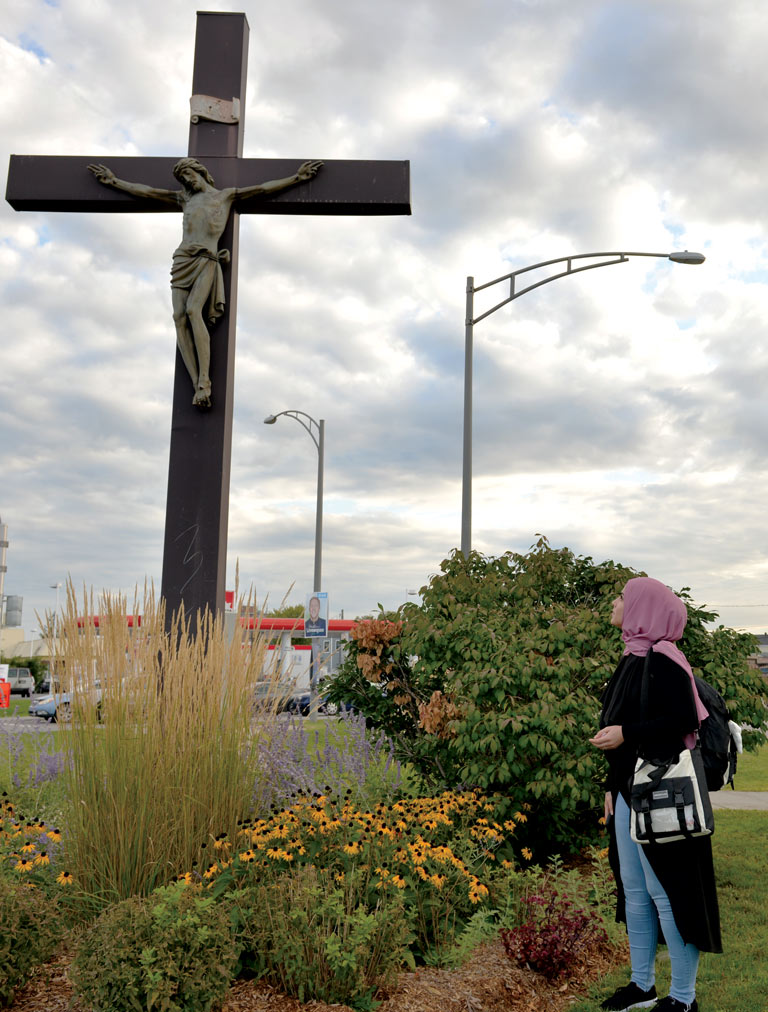
Beginning in the 1980s a new conservatism emerged. Rooted in neo-liberalism and social Darwinism, it is materialistic and has no use for religion. By that time, the growing presence of new immigrants wearing visible religious symbols — mostly Muslim women and Sikh men, adding their presence to the Orthodox Jewish men who had been living in Quebec for more than a century — met with incomprehension in a province where churches were for sale everywhere and among a people whose religious attendance was down to twenty per cent.
At the thought of hijab- or niqab-wearing women teaching children, old-school feminists who had fought the religious patriarchy all of their lives asked themselves if Quebec society was regressing. In their eyes, the sight of women in religious attire irresistibly recalled the teaching nuns of the 1950s.
Marie-Claude Girard, a retired member of the Canadian Human Rights Commission, wrote in the Montreal newspaper La Presse in December 2021: “Equality of all citizens is also one of the principles on which the law is based. However, religious symbols are, with a few exceptions, resolutely differentiated for women and for men, and each of them conveys a distinct social status, values, roles, and responsibilities, which exacerbates their sexist character. Thus, by prohibiting the display of religious symbols by state employees in positions of authority, Bill 21 ensures that it does not promote sexist signs that violate equality between women and men.”
A collective of secular-minded Muslim Canadians recently supported the law, arguing in a July 2021 letter to La Presse, “The best way to make [Canadians’] anger toward Muslims disappear is not to multiply religious privileges and promote religious insularity, but rather to base a politics of integration on Canada’s secular and democratic values…. Bill 21 has the effect of limiting, in public schools, the social pressure that young Muslim women feel to wear a hijab.”
But the government of Premier François Legault left Bill 21 open to accusations of hypocrisy by making it internally inconsistent and by creating loopholes that effectively exempt symbols of the province’s Christian past. One obvious legacy of Quebec’s Catholic heritage are the 513 cities, towns, and villages whose names contain the word “saint.” Rather than mandating that those names be changed, the law specifically protects them, stating that the principle of secularism must not “be interpreted as affecting toponomy.” The law also protects the crosses and other Catholic symbols found on public property by stating that the principle of secularism “must not be interpreted as requiring an institution … to remove or alter an immovable [property] or a movable property adorning an immovable [property].”
The crucifix that hung until recently in Quebec’s National Assembly is a case in point: Legault initially refused to take it down, arguing that it was not a religious symbol but a cultural and historical one — a lame argument at best. Political pressure eventually forced him to remove it in 2019, because keeping it there while banning public officials from wearing religious symbols was logically untenable and gave the perception of bias in favour of Christians. Yet crosses remain on government-owned properties across the province.
Among other flaws, the law puts the secularism of the state mostly on the shoulders of civil servants. One could argue that, in spite of its ambitious title, the law is hardly more than a dress code for civil servants — and the civil servants it affects most are not Christians, whose faith does not require lay people to wear religious symbols, but rather members of certain religious minorities.
The World Sikh Organization of Canada pointed this out in its submission to the Committee on Institutions of Quebec’s National Assembly: “The turban is not a religious symbol but an article of faith. While items like a crucifix or other jewellery are optional, the turban is mandatory and cannot be removed,” the submission stated. “Governments … have the responsibility to step in and protect the minority from the tyranny of the majority. Yet Bill 21 does the opposite and, instead, perpetrates a tyranny on those for whom religion is a way of life.”
This peculiar debate shows the ambiguous attitude of many French-speaking Quebecers towards their Catholic past: They no longer practise the Catholic religion and would not want to go back to the old times, but they still see their Catholic heritage as part of their national identity. This makes it hard for people who practise different religions to be considered truly Québécois.
There is no denying that a measure of xenophobia contributes to the support for Bill 21, but this is far from being the whole story. It is said that politics makes strange bedfellows. The alliance of feminists, secular-minded Muslims, and old-school nationalists in favour of Bill 21 is an illustration of this adage and goes a long way toward explaining the support given to the law by two-thirds of Quebecers. The decision of the Legault government to use the notwithstanding clause of the Constitution to protect the bill from legal challenges is unlikely to put an end to the debate.
Related
Themes associated with this article
Advertisement




